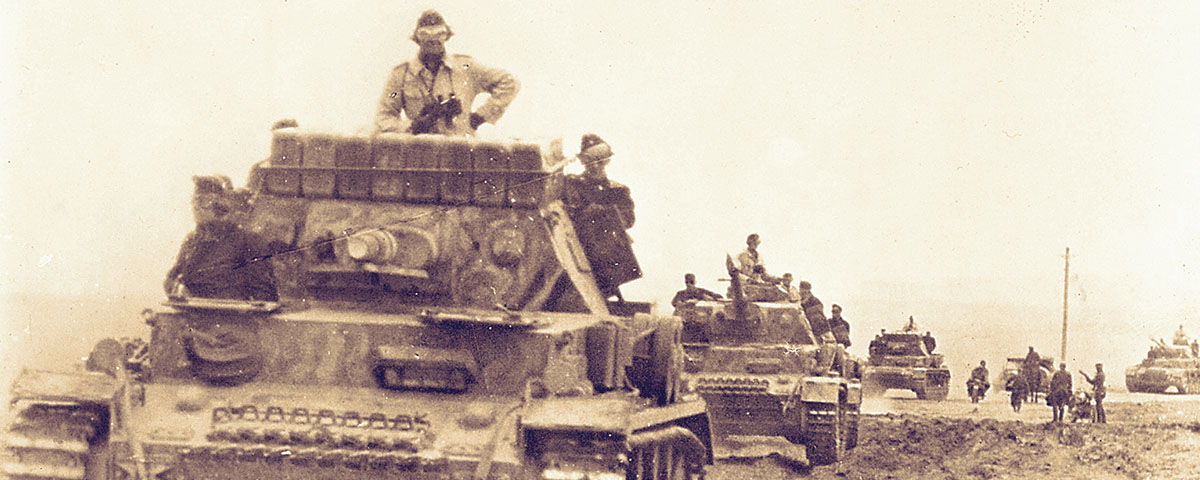In December 1942 German Field Marshal Erich von Manstein’s Army Group Don was preparing to launch Unternehmen Wintergewitter (“Operation Winter Storm”) to relieve the encircled Sixth Army at Stalingrad, Russia. To the south along the Chir River the Germans were deployed with two infantry divisions on line, while the 11th Panzer Division, commanded by Maj. Gen. Hermann Balck, formed the corps reserve. But on December 7 the Russians struck first, as elements of the Soviet Fifth Tank Army stormed across the river and hit the XLVIII Panzer Corps. That day the Soviet I Tank Corps penetrated 10 miles into German lines.
Advancing his units rapidly overnight, Balck counterattacked at dawn, pinning down the Soviet front with one of his Panzergrenadier regiments while his panzer regiment and other Panzergrenadier regiment swung around to deliver a decisive blow against the Soviet rear. By day’s end the Germans had destroyed 53 Soviet tanks and thrown I Tank Corps back across the Chir.
Late on December 11 the Soviets made two more major crossings of the Chir. After another nighttime advance the 11th Panzer Division attacked one of the Soviet penetrations at dawn. Once Balck had eliminated that threat, he moved his division 15 miles northwest to engage the second Soviet bridgehead. At daybreak on December 13 the division was preparing its final attack when another strong Soviet force struck its right flank. Although the Russians surrounded one of Balck’s battalions, he pressed his attack on the bridgehead while methodically extracting his encircled battalion. By that point the 11th Panzer Division had been marching by night and fighting by day almost continually for a full week.
The Soviets struck again on December 15. Although Balck’s panzer regiment was down to just 25 operational tanks, he sent it against a 42-tank column of the Soviet Motor Mechanized Corps. In the darkness Balck’s tanks slipped into the rear of the enemy column so deftly that the Soviets mistook them for their own tanks. Before the Russians knew what was happening, the panzers opened fire and rolled up the entire column, destroying all 42 enemy tanks. Balck’s panzers then turned to meet another approaching column of 23 Soviet tanks. Arrayed on lower ground, the Germans had clear belly shots as the Soviet tanks crested the higher ground to their front. By day’s end the 11th Panzer Division had destroyed a Soviet corps and its 65 tanks without suffering a single loss.
By December 22 the battles along the Chir were over. The Soviet Fifth Tank Army had been virtually destroyed, primarily by a lone panzer division and despite a local Soviet numerical superiority of 11-to-1 in infantry, 7-to-1 in tanks and 20-to-1 in guns. It remains one of the greatest divisional tank victories in history.
Nacht Marschiere sparen Blut. “Night marches save blood” was Balck’s principal axiom. The German tank commander continually moved his units at night and attacked during the day, employing blitzkrieg tactics of surprise, speed and intensity.
Concentrate your forces. Although moving against the Germans concentrically, the Soviet Fifth Tank Army attacked piecemeal and thus was destroyed piecemeal.
Exploit interior lines. Balck fought sequentially in three different directions, but he had the advantage of interior lines.
Seek the low ground? Contrary to tactical convention, sometimes the low ground is the best position, especially in tank battles.





